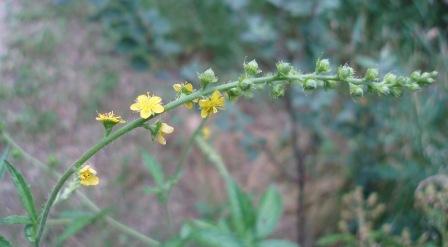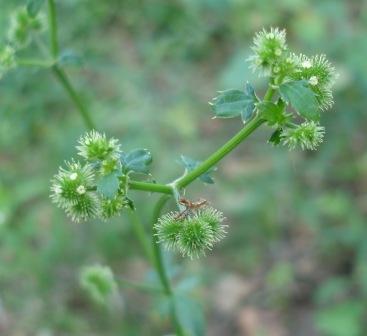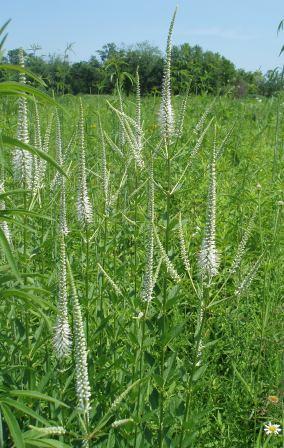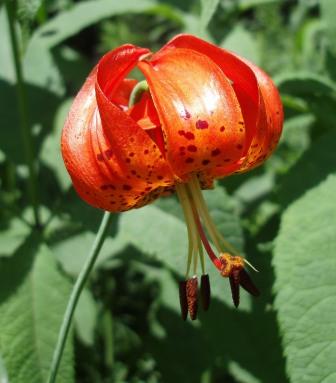by Carl Strang
In summer the main wildflower action shifts to prairies and other open areas, but in recent weeks there have been plenty of species blooming in the savanna woodlands at Mayslake Forest Preserve. Tall agrimony plants have been flowering for a while, now.

These small yellow flowers will produce burs to be dispersed by mammals that brush past and catch the burs’ hooks on their fur or clothing. Another species that disperses in the same way is enchanter’s nightshade.

Named for Circe of Greek mythology, Circaea is an annual that I also could have included in a weeds update because of its “weedy” life history strategy. I expect to be pulling many of its tiny burs off my shoelaces later in the season.
The flowers of Canada black snakeroot are so tiny that they are easy to miss.

Also small are the flowers of white vervain, but they at least are in strings at the tops of relatively tall plants.

Speaking of tall, here is a more conspicuous bloomer common in a wide range of our woodlands.

Tall bellflower was the subject of a study published last year that interested me (Yang, Louie H. 2008. Pulses of dead periodical cicadas increase herbivory of American bellflowers. Ecology 89:1497-1502). Yang experimentally fertilized plants of this species with the bodies of periodical cicadas, and found that deer preferentially fed on treated plants. This was a new demonstration of how the cicadas’ abundant emergences have a profound ecological impact.
The shorter blue-flowering plants of self heal occur in woodlands and in the open.

Incidentally, lowering my sights one day as I walked the slope between the friary and May’s Lake, I saw the following plant.

Unless I am mistaken, this is a ginkgo seedling. The closest female ginkgo trees I know of are a half mile away, on Mayslake’s Peabody Mansion grounds, though there is a residential neighborhood just west of the friary that might have others. Their fruits are notoriously smelly to us, but apparently were acceptable as food to a bird.
Among the most recent flowers to appear are those of the nodding wild onion.

I’ll conclude with a couple of species that occur both in open woodlands and in prairies: Culver’s root

and, most spectacular of the lot, Michigan lily.

These are few and scattered wherever they occur, so remember to enjoy them in place and resist the temptation to (illegally) pick them. Flowers generally are protected on all forest preserves.














